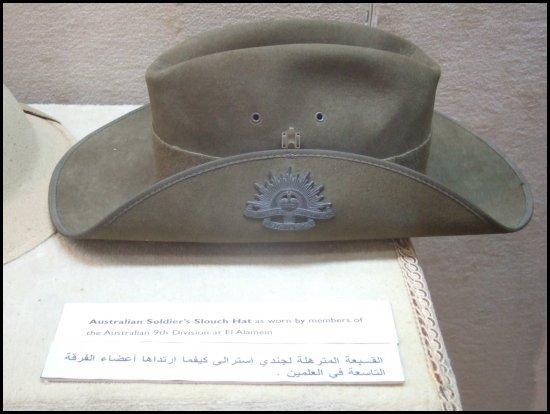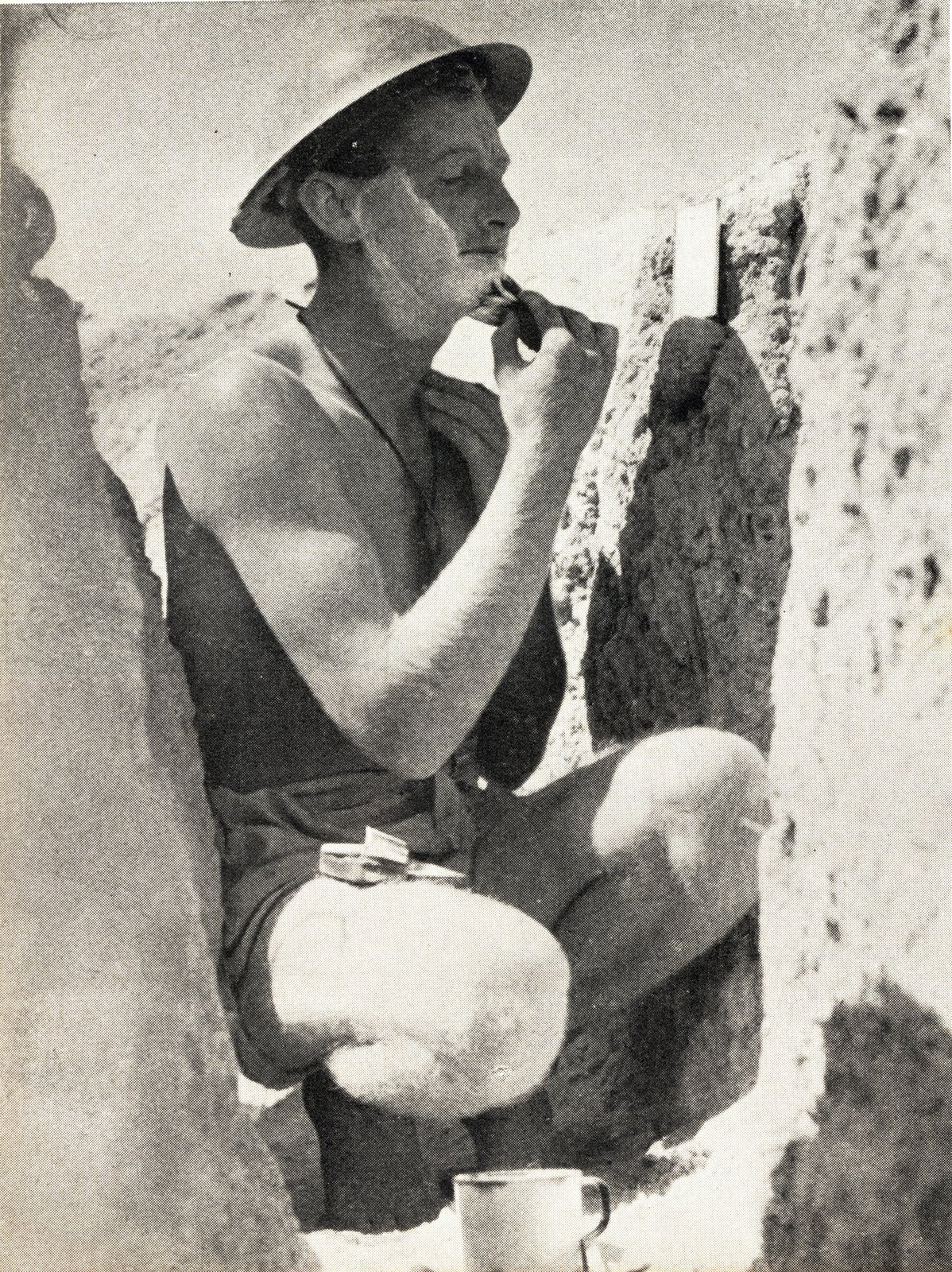Saturday, September 6, 2008
[Image] 2/13th goes through the wire at R27.
[Image] The long walk to the cage
Sunday, August 17, 2008
[Image] The Digger of Alamein
Saturday, August 2, 2008
[Image] The Gateway to Fortress Tobruk
The gateway to the heart of Tobruk and it's inner defenses and harbour lay through the southern approaching El-Adem Road. It is at this point that Rommel first probed the defenses of the Garrison in the Easter Battle of 1941.
This heavily fortified and defended position is guarded by Pvt. Earl of the 2/13th Battalion. I have not been able to identify this digger any further at this stage. He sits astride a concrete pillar with his Lee-Enfield .303 with fixed bayonet. Being on the line he is also wearing his Tin Hat.
The gateway was surrounded by an anti-tank ditch and huge amount of barbed wire. The steel poles set into the concrete could be slid back to allow access for approved vehicles. Interestingly, when Rommel's tanks did first attack Tobruk in this area they chose not to breech the line at this point. That was one of their only wise decisions that weekend.
image 007499 Australian War Memorial.
Saturday, July 26, 2008
[Image] 9th Division Digger at Alamein
 3rd November, 1942
3rd November, 1942El Alamein, Egypt.
An Australian Digger of the 9th Division menaces with bayonet fixed on his Lee-Enfield .303 rifle. He wears the standard Commonwealth Tin Hat and his shirt looks bleached from the North African sun.
Unfortunately the identity of this soldier is unknown but I wouldn't stand in his way. Many a German or Italian would have felt the same when confronted by this bloke and his bayonet. The Australian bayonet used in WW2 was a surplus item from WW1. It was quite long and had a very intimidating look when fixed (as is obvious from the photo above). Many an Axis soldier feared the Australian wielding a fixed bayonet.
image 042078 Australian War Memorial.
Friday, July 25, 2008
[Image] 9th Division troops guard Axis prisoners of war at Alamein
 Australian troops of the 9th Division guard Axis prisoners of war at Alamein. Note the fixed bayonets on the Lee-Enfield .303's. The German prisoners appear to be in formal battle dress whilst the Italians are much more casually attired.
Australian troops of the 9th Division guard Axis prisoners of war at Alamein. Note the fixed bayonets on the Lee-Enfield .303's. The German prisoners appear to be in formal battle dress whilst the Italians are much more casually attired.image Imperial War Museum E2478
[Image] Tobruk Patrol by Day
 Image taken from "Active Service - with Australia in the Middle East". Australian War Memorial 1941.
Image taken from "Active Service - with Australia in the Middle East". Australian War Memorial 1941.A patrol of 9th Division troops goes outside the wire of Tobruk's defenses into no mans land. Patrols like this constantly harassed the enemy at Tobruk. It was commonly felt amongst Australian troops that they "owned no-man's land". Major-General Leslie Morshead, commander of the Tobruk garrison implemented a series of relentless patrolling around the besieged troops in a constant source of concern for both Germans and Italians alike.
 image 009394 Australian War Memorial.
image 009394 Australian War Memorial.
Thursday, July 24, 2008
[Image] The Alamein Heaven Photo












